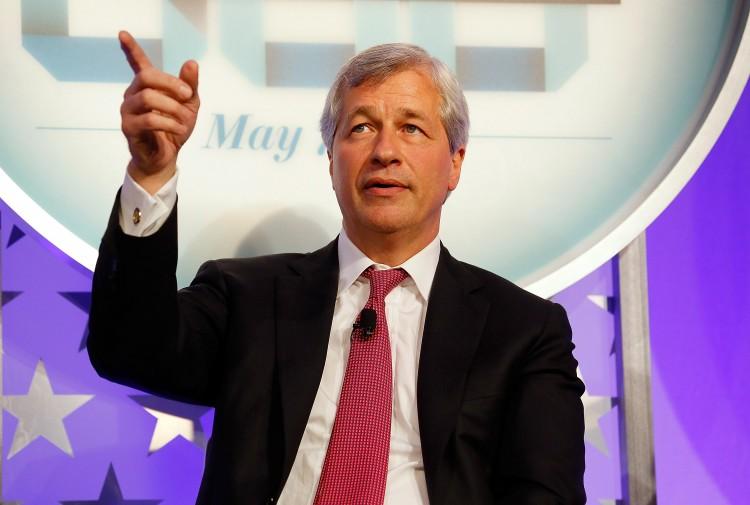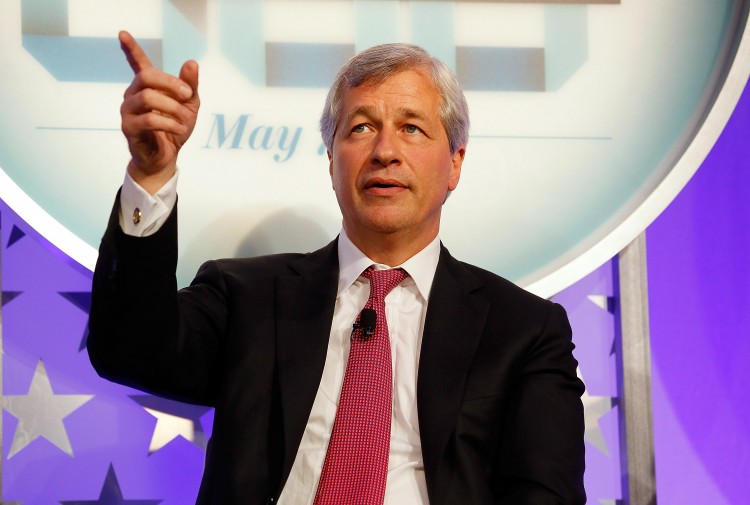NEW YORK—The recently disclosed $2 billion trading loss at JPMorgan Chase & Co. is a black eye for the bank—which until last week was perceived to be a leader in risk management—and for the entire banking industry.
The $2 billion loss was reported in the company’s Chief Investment Office (CIO), and was disclosed after Chief Executive Officer Jamie Dimon hastily arranged a conference call last week.
In its wake, shares of JPMorgan fell more than 9 percent last Friday. And that’s not all, shares of other banks also declined, with Citigroup Inc. shedding 4.2 percent, Bank of America Corp. down 2 percent, and Goldman Sachs Group Inc. falling 3.9 percent.
In addition, the loss prompted federal regulators to inquire about the trading strategies and Fitch Ratings lowered the short- and long-term debt credit rating of JPMorgan. While regulators do not need to approve investment decisions at any bank, they would be interested in the sufficiency of capital at a large bank such as JPMorgan.
Bad Timing
The timing of this loss, and its disclosure, couldn’t come at a worse time for the industry.
It’s not the $2 billion loss that will hurt. JPMorgan has been highly profitable; last year it recorded profits of almost $19 billion. It’s the reputational damage that will prove to be lasting.
Jamie Dimon has been, up until today, viewed as one of the best risk managers on Wall Street. His firm’s, and his, credibility has been damaged.
In addition, Dimon has been one of the most outspoken critics of the recently enacted Dodd-Frank financial reform legislation, including the controversial Volcker Rule, which prohibits banking firms from taking proprietary positions.
Proprietary trading, which is trading using the firm’s own funds, is highly lucrative but also immensely risky. The Volcker Rule proposes that banks taking deposits should not take such risks. Banks including JPMorgan, Morgan Stanley, and Goldman Sachs, have argued to include more exceptions to the Volcker Rule, to allow some risk taking.
This loss will likely have a negative effect on Dimon’s argument, and add ammo to proponents of more regulations. “Opponents of Wall Street reform must not be allowed to gut important protections for the financial system and taxpayers,” said Senate Banking Committee Chairman Sen. Tim Johnson (D-S.D.) in a statement last week.
Part of their argument is that if JPMorgan, one of the best risk managers on the street, can get it wrong, what will happen at other financial institutions?
What Happened?
The losses were due to a synthetic credit derivative position that had gone wrong. “This was a unique thing we did. ...We'll change appropriately as we get our hands around it,” Dimon announced on last Thursday’s conference call.
The CIO department is tasked with making trades with excess deposits that the bank has on hand, which many strategies aiming to make positive income for the bank. According to a Forbes report, CIO generated post-tax income of $3.7 billion for the company in 2009, in its best year.
It was reported that last year, the CIO department began underwriting credit default swaps (CDS), which are essentially guarantees of debt. CDSs were made famous during the 2008 financial crisis as they were chiefly responsible for insurer AIG’s near collapse.
The CIO sold CDSs on an index called CDX IG Series 9, which is an index of major American corporations. JPMorgan would earn premiums from selling such swaps, and at the time, it bet that the probability of default was far less than the potential income from selling such insurance policies.
According to the Financial Times, the trades were made under the guidance of Bruno Iksil, the purported “London Whale,” a trader based in London.
By early this year, multiple hedge funds caught wind of this strategy employed by the CIO. They began to bet against JPMorgan, and bet that the premiums to insure the companies comprising of the index would rise, which would make these CDSs less valuable.
In March and April, when the stock market began to fall, the risk premiums rose along with the spreads on the index. In addition, JPMorgan’s potential claims got bigger due to more market uncertainty and declining stock prices, and the values of the CDSs fell.
It is unclear whether the Volcker Rule would have prohibited the trading strategy, which caused the loss, because JPMorgan reported the loss as a hedge gone wrong. The new legislation would allow certain derivative trades that qualify as hedges against risks elsewhere in the bank.
The Epoch Times publishes in 35 countries and in 19 languages. Subscribe to our e-newsletter.






